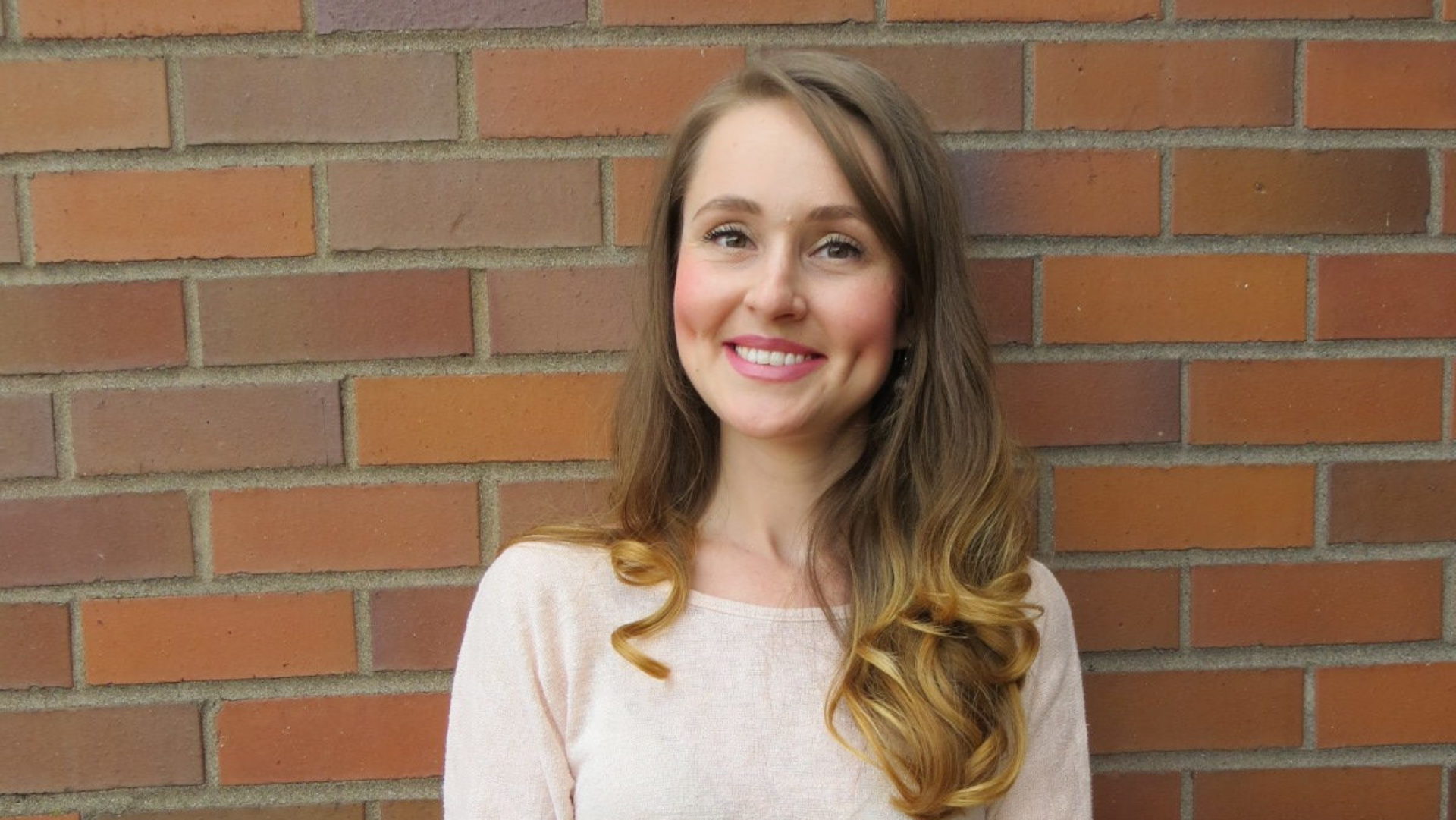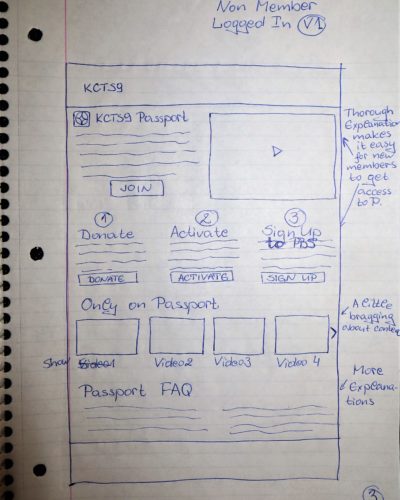Reading Time: 5 Minutes
Project Background
In Spring 2018 I interned at KCTS 9. There I worked as an UX Researcher for the redesign of KCTS 9 Passport portal. Passport is an on demand video streaming service available to KCTS 9 donors.
Here I want to say a quick “Thank you” to the whole KCTS 9 Web team for the great work, and for letting me share this project on my portfolio. You are awesome!
Organisation: KCTS 9
Tools: Trello, Survey Monkey, Apowersoft
Date: Apr – Jun 2018
UX Methods: Heuristic evaluation, Formative surveys, Usability Testing
My Role
- Conducted heuristic evaluations of original website and competitors.
- Prepared online survey questionnaire and analysed the results.
- Created usability testing scenarios and tasks.
- Facilitated usability testing sessions.
- Presented findings and recommendations to stakeholders.
- Actively communicated with stakeholders and representative users.
Organisation Info
KCTS 9 is a non-profit educational television station based in Seattle, Washington. It is the primary member station for PBS (Public Broadcasting Service) in the area. KCTS 9 mission is to inspire a smarter world.
KCTS 9 Passport is an on-demand video streaming service for KCTS 9 donors who have donated more than $60 per year. The members have unlimited access to high-quality PBS programming.
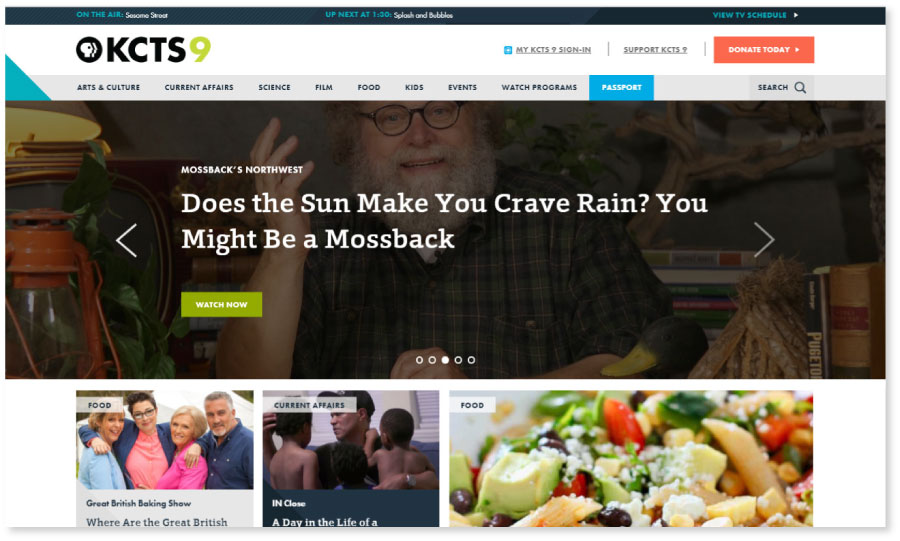
Problem
Unusually high number of users contacted customer support because they had issues with the desktop version of Passport portal.
Objectives
- Identify the user pain points during the login / signup process.
- Find opportunities for improvement of the Passport portal page.
- Pinpoint and adopt best practices from competitors.
- Create redesign prototypes for the three main user scenarios.
- Test the redesign prototypes and incorporate the users feedback into the final redesign.
User Centered Design Process

Plan Phase
Heuristic evaluation
My first step was to get to know the original Passport portal and evaluate the pages and login process based on the ten heuristics. This way I learned more about the project, and identified potential areas for improvement.
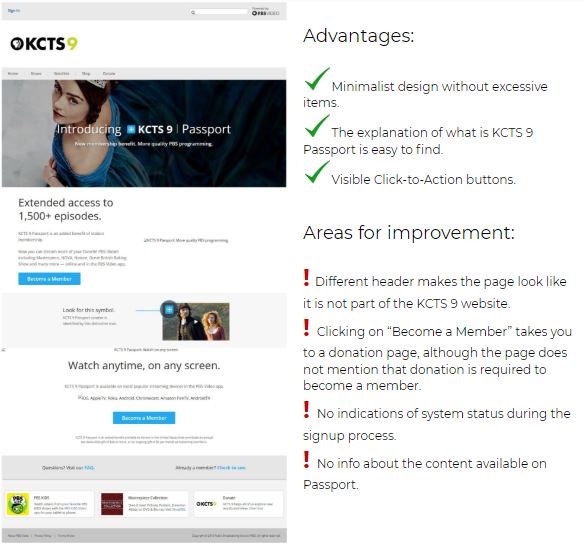
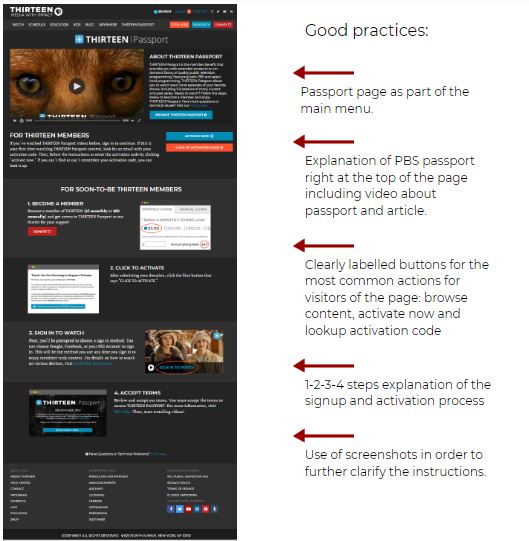
Heuristic evaluation of competitor website
Our team manager pointed out one of the competitor websites, which she liked, in order to inspire the redesign process. The competitor website was a good example of incorporating on-demand PBS programming into a regional TV channel website. I conducted a heuristic evaluation in order to identify some good practices related to features, content structure and visual style. I presented my findings to the team and we discussed which of those practices we can adapt.
Research Phase
Formative survey
The next step was to ask the existing users about the issues that they face while interacting with Passport portal. The goal was to learn their opinion on the signup / login process and the page features in order to verify or deny my initial ideas and hypothesis from the heuristic evaluation. We decided to use an online survey as a fast and efficient way to gain this information. KCTS 9 has a separate mailing list for Passport members which made our recruitment process easy.
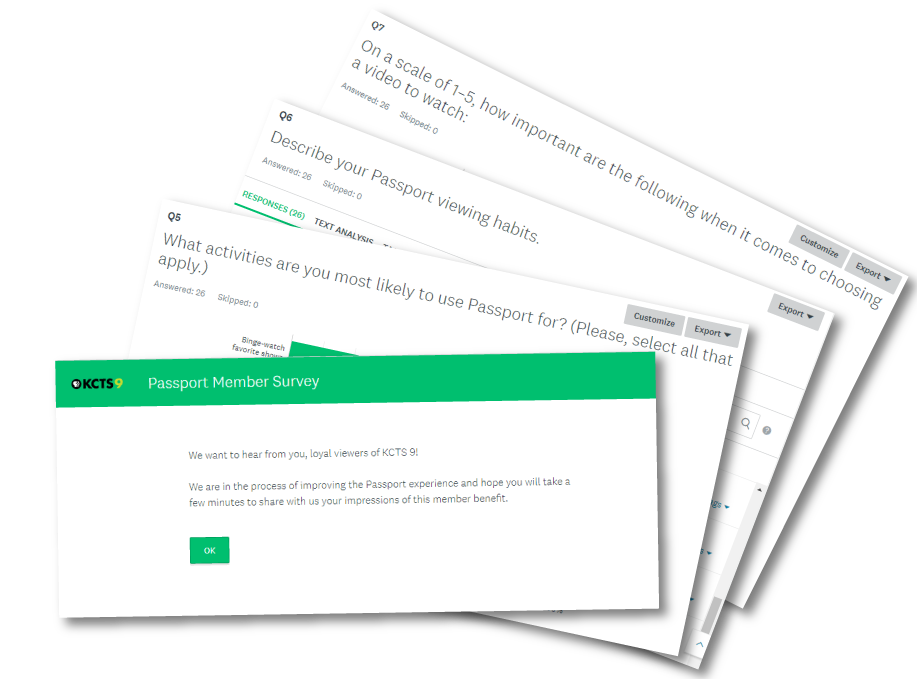
Design Phase
Prototyping
Based on the findings from the previous activities we started the design process with some sketches. Me and the UX designer came up with two versions each for the potential redesign.
After that we had a meeting during which we discussed our designs and combined the best ideas into the prototypes. Then my colleague built clickable medium-fidelity InVision prototypes which we used during the testing.
Here are my sketches:
Usability Testing
We tested the prototypes with representative users in order to correct any flaws or add further improvements before handing the design off to the developers team.
Impact
The findings and recommendations from my research activities guided the redesign process of KCTS 9 Passport portal.
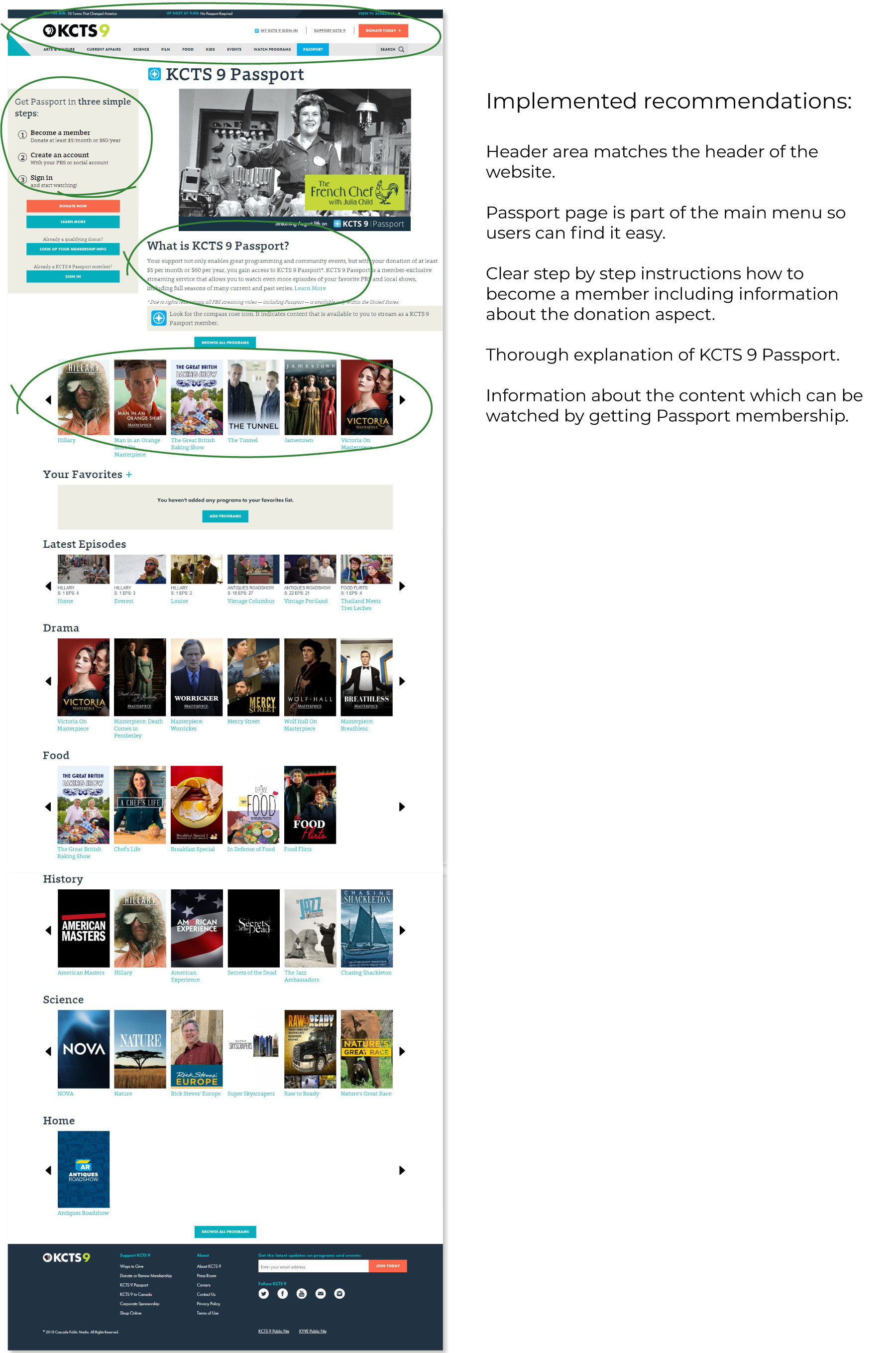
Reflections & Learning Outcomes
- While interning at KCTS 9 I realised that having a good understanding of the company and the product is as equally important as having a good knowledge of UX research methods. I spend a lot of time in the beginning to familiarize myself with the organisation and the specific project. However, I often had additional questions for my colleagues.
- This internship helped me learn more about the dynamics of working in a multidisciplinary team. It was very enriching to see the project from the perspectives of colleagues from different teams, and get their input to the final design. Next time when I work on a similar team I would ask all stakeholders even more questions at the beginning of the project so that I can better incorporate their insights in the research, and find all the specific information they need.
- Flexibility. There was an unexpected power outage during the first day of usability testing. We had to reschedule all sessions for another day. This experience reminded me that as researchers we should always be prepared for unexpected situations and ready to deploy plan B. In this case we had built our testing schedule with a little bit of time buffer, and thanks to that the power outage did not cause a delay in the project.
